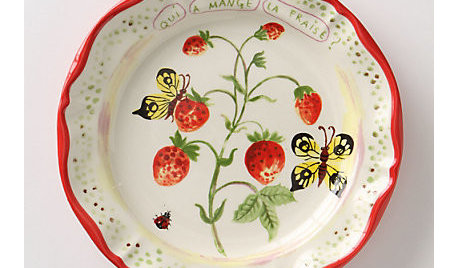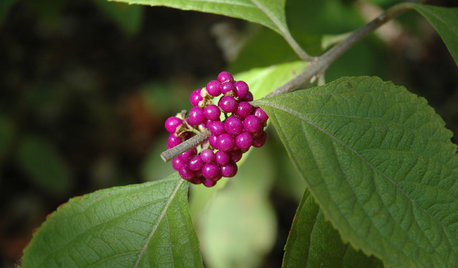Porcelain berry --worry or not?
ctlady_gw
15 years ago
Related Stories

KITCHEN DESIGNGet Quartz and Porcelain Surfaces Super Clean
These cleaning tips for quartz, travertine, porcelain and engineered stone will help keep your countertops and sinks looking spotless
Full Story
REMODELING GUIDESChoosing Tile: Durable, Versatile Porcelain
Get the Look of Stone, Metal, Terracotta and More With Today's Porcelain Tile
Full Story
BLUETwist on Tradition: Blue and White Porcelain
9 ways to show off these lovely pieces all over the house
Full Story
PRODUCT PICKSGuest Picks: 20 Berry Good Kitchen Finds
This batch of baking, canning and berry-inspired kitchen supplies is ripe for the picking
Full Story
CONTAINER GARDENSPatio-Perfect Berry Bushes Like You’ve Never Seen
Small enough for pots but offering abundant fruit, these remarkable bred berries are a boon for gardeners short on space
Full Story
TILETop Tile Trends From the Coverings 2013 Show — the Wood Look
Get the beauty of wood while waving off potential splinters, rotting and long searches, thanks to eye-fooling ceramic and porcelain tiles
Full Story
KITCHEN DESIGNThe Future of Backsplashes
Grout is out. Continuous sheets of glass, stone, metal and porcelain are saving cleaning time and offering more looks than ever
Full Story
REMODELING GUIDESHouse Planning: How to Choose Tile
Glass, Ceramic, Porcelain...? Three Basic Questions Will Help You Make the Right Pick
Full Story
LIFEDecluttering — How to Get the Help You Need
Don't worry if you can't shed stuff and organize alone; help is at your disposal
Full Story
GARDENING GUIDESGreat Design Plant: Nourish Wildlife With American Beautyberry
The bright purple berries of Callicarpa americana feed winged beauties and make the Southeast U.S. native a fall garden standout
Full StoryMore Discussions








arbo_retum
diggingthedirt
Related Professionals
Citrus Heights Landscape Architects & Landscape Designers · Mountain Brook Landscape Architects & Landscape Designers · Brunswick Landscape Contractors · Coeur d'Alene Landscape Contractors · Darien Landscape Contractors · Dinuba Landscape Contractors · Essex Landscape Contractors · Farmington Landscape Contractors · Lynchburg Landscape Contractors · Soddy Daisy Landscape Contractors · Winter Gardens Landscape Contractors · Del Aire Decks, Patios & Outdoor Enclosures · Fort Pierce Decks, Patios & Outdoor Enclosures · Universal City Decks, Patios & Outdoor Enclosures · Wilmington Decks, Patios & Outdoor Enclosureshunt4carl
ctlady_gwOriginal Author
runktrun
ctlady_gwOriginal Author
hunt4carl
ctlady_gwOriginal Author
terrene